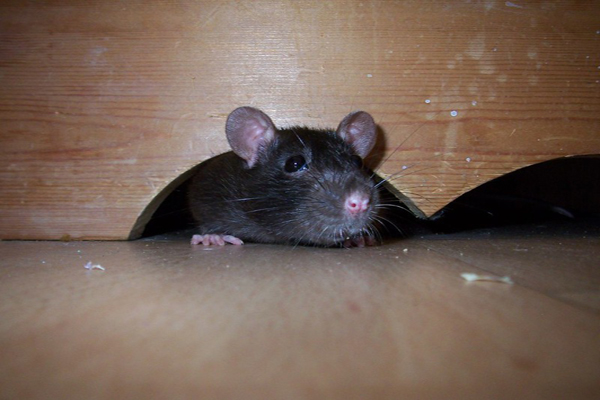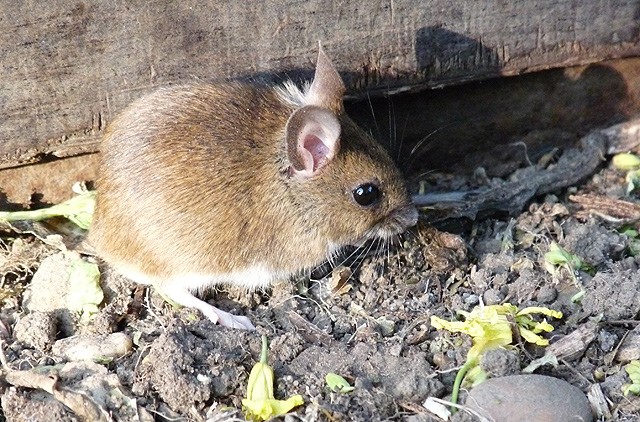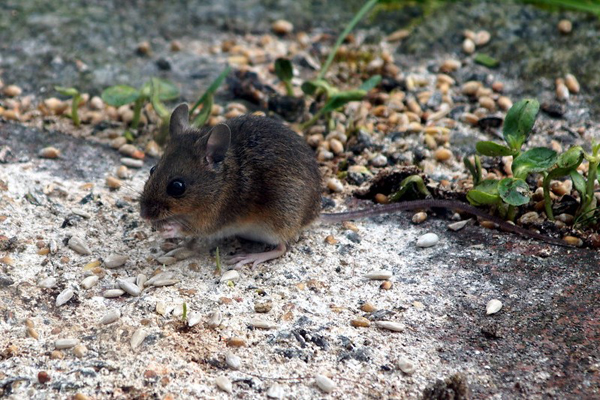
- Brian Moss (President)
- AAAC Wildlife Removal
11/28/2022 Total words : 1589
Sounds of Mice in the Attic
Do you hear something scurrying around in your attic? If so, you may have a mouse problem! Mice can be a real nuisance, and they can also pose a health risk if they get into your home. In this blog post, we will explain what mice in the attic sound like, and we will also give you some tips to prevent mice from invading your attic. What Does a Mouse in the Attic Sound Like? Mice are small creatures, so they don't make much commotion when they move around. However, their tiny feet can be heard as squeaky footsteps on wooden boards or insulation. You'll also pick up rustling noise coming from the insulation as they build a nest. If you have mouse activity in your attic, it will sound like tiny footsteps above your head or scratching and squeaking sounds that can be heard through the walls of your home. Different Sounds Mice Make Mice in the attic can make a lot of different noises depending on what they are doing. These rodents make their presence known during the day and night, so you'll be able to hear squeaking, scurrying noise around whether it's light or dark outside. These are some of the most common mice in attic sounds that you may hear: 1. Vocal Noises Mice are very vocal animals, and they will make a variety of squeaks and chirping to communicate with one another. The sound is similar to what you would hear from a bird or rodent. They also make a high-pitched squeak when they are scared or in pain. 1a. High-pitched squeak This is a common noise that mice make when they are scared or in pain. They also use this sound to communicate with each other. 1b. Clicks and chirps Mice communicate by making a variety of different clicking and chirping. These sounds are often used to show excitement or aggression, but they can also be used for communication between two mice who are close together in proximity (such as when mating). 1c. Chattering teeth Mice will chatter their teeth when they are feeling threatened or nervous. The sound is made by the rodent rubbing its incisors together rapidly. 1d. Screeching and fighting noises If you have more than one mouse in your attic, you may hear them fighting each other. This usually happens when there is a limited amount of food or space available. The fighting can be loud and will often involve screeching or screaming. 2. Scratching Sounds This sound is often heard when the mouse is trying to get through something or climb up a wall or ceiling. It can also be caused by them chewing on wood, drywall, electrical wires, plastic pipes, etc. You can also hear this when they made nests with insulation. This sound is one of the most common sounds that people associate with mice, and it can be heard throughout the day and night. 3. Gnawing or Chewing Mouse's incisors never stop growing, so they need to constantly gnaw on things to keep them sharp. This is why you'll often hear mice in your attic chew on wood, wires, and other objects. The noise this makes is a combination of chewing and grinding. And when a mouse infestation is present, this will be the most common noise you hear. This noise is heard mostly at night when the mouse is foraging for scraps. As we said before, this is one of the main ways that mice find their food. 4. Scurrying Around on Wood and Insulation One of the most common sounds that people hear from mice in attics is scurrying on wood and insulation. This can be heard throughout the day and night, depending on when they are active. This sound is caused by the mouse's tiny feet and their bodies brushing against the surface. It's also a sign of an infestation if you start hearing noises like this because they will use it as nesting materials. Other Signs That You Have Mice in Your Attic There are many signs that you may have a mouse problem. If there's any evidence of droppings or urine anywhere in your home, it could be from rodents. Here are other signs of rodent infestation: gnaw marks on furniture, food packages and electrical wiring. nesting sites made from shredded paper or fabric that have been chewed up by mice to make their bedding material more comfortable to sleep in; these are usually found near entry points for rodents like gaps under doors and windowsills where there's easy access droppings smell of rodent urine holes in floors and walls tracks and runways on the surface of objects or walls Prevent Mice in the Attic You cannot immediately know if there are mice in your attic until you start hearing sounds and see other warning signs. But there are ways to prevent these rodents from living in your home so that they don't cause any damage or health problems for yourself, family members, pets, and anyone else who lives with them! You can take some preventative steps to make it harder for them to get in. These are: Block Off Entry Points Mice can squeeze through tiny holes to get into your attic, so it's important that you seal off any potential entrances. The most common areas for this are around pipes and wires where mice climb and enter the house from outside or through gaps under doors and windowsills; use caulk to fill these cracks up so there's no way for rodents of any size to get through them. Remove Food Sources Another way to prevent mice from coming into your attic is by removing food sources. You can do this by keeping all stored food items sealed tightly and away from any potential accesses; this means not leaving them out on counters or tables where they might be accessible! If possible, keep these areas clean and free of any clutter so that there is nothing for the mice to eat. Maintain a Good Hygiene Habit Another way to stop rodents from entering your home is by having good hygiene habits. This means not leaving foods or water out in uncleaned areas and making sure all trash cans have tight-fitting lids. If you have any pet feed bowls, make sure they are cleaned regularly and placed away from any potential access for mice like gaps under doors or windowsills. Keep Your Attic Clean It's also important to keep your attic clean so that there aren't any places where mice can hide. This means not leaving anything on the floor, such as old boxes or furniture, and not putting any edibles out in this area either. You can use steel wool around holes where wires or pipes enter the house from outside. If you have insulation in your attic, make sure to keep it clean and free from any droppings or urine. Keep Your Garage Clean Another way of preventing critters from entering your home is to keep your garage clean. This means ensuring that there are no edible sources for them and that all areas are free of clutter. You can use the same methods as you would for your attic - keeping it clean and sealed off from potential access areas. Install a Metal Mesh Over Your Vents One way to keep the mice out is to install a metal mesh over your vents. This will stop them from getting in and also prevent other pests like bugs or wasps from getting in as well. You can buy these at most hardware stores and they are an easy way to protect your home. Put Up Screens on Your Windows and Doors with Tight-Fitting Frames. You can also use steel wool in the gaps between baseboards and walls, as well as around doors or windows that don’t close tightly enough; these materials are too hard for mice teeth to chew on so they cannot enter through an area like this if you've put steel wool in it. Rats vs. Mice Rats and mice might look very similar to the average homeowner but they are two very different species. So, what's the difference between a rat and a mouse you ask? Well, rats are usually bigger than mice, and they have long tails. Mice have small ears, and their tails are shorter than their bodies. Rats live in colonies, while mice are more solitary creatures. Both rats and mice will eat your food, and both can contaminate your food with their feces. The most common house mouse that is found in the US is the Deer Mouse, the White-footed Mouse, and the Field Mouse. So, be careful if you see a small brown mouse in your house, it could be either one! Mice are more common than rats in houses, but both rodents can cause damage and spread disease. If you think you have either of these pests in your home, it's important to contact a pest control professional to get rid of them as soon as possible. Professional Rodent Control If there is a full-blown infestation of mice in your attic, it’s important to take action and get rid of them as soon as possible. Mice can cause a lot of damage and health problems if left untreated. AAAC Wildlife Removal specializes in removing mice from attics and other areas of your home. We have the expertise to get rid of other rodents including rats, squirrels, raccoons, bats, birds & more! Originally published on https://aaacwildliferemoval.com/blog/mice/mice-in-the-attic-sounds/
Field Mouse Facts
The striped field mouse or meadow vole or wood mouse is a stout rodent found throughout much of North America. They have coarse brown fur with light gray or white undersides and are typically between six and seven inches in length, not including their tail length. These little guys can be pesky pests and can often be found in fields, meadows, and gardens. They are particularly attracted to areas where there is an abundance of food, such as compost piles or bird feeders. Differences Between Field Mouse and House Mouse Striped field mice and house mice came from different genera and species. House mice(mus musculus) is a common pest that is found in both rural and urban areas where humans live, while field mice are native to Europe but have been introduced throughout the world. Their physical features are different as well. The house mouse has brown-grey mouse-like fur, from head to tail with lighter color underneath, while field mice have brown-grey fur with a white or grey underside. A house mouse has a hairless tail the same length as its body but it is thicker than a field mouse's tails which are also the same length as their bodies. Their storing of foods is also different. House mice and field mice both store food, but field mouse stores near their nests, while house mouse doesn't. Additionally, a house mouse's smell is stronger than a field mouse. Other than these, their droppings, nests, and the way they move around are all quite similar. Fascinating Facts About The Field Mouse The field mouse can be quite a pest but they can also be quite interesting. Read on to learn more about these little critters: Field Mice are Highly Adaptable Rodents Mice are incredibly adaptable creatures and the field mouse is no exception. They have been introduced to many different parts of the world and have successfully adapted to a wide range of habitats, from forests to urban areas. Their agility and flexibility allow them to survive and be more courageous in exploring new areas and environments. This makes them particularly successful as pests. They can fit through small holes, cracks, and crevices to gain access to buildings or homes. Their fur makes them look bigger so they can scare off some predators. They use their urine to mark their territory. They Have an Excellent Sense of Hearing Even though they don't have good eyesight, field mice have excellent hearing along with a strong sense of smell. Their large auditory bullae allow them to hear sounds at frequencies up to 70 kHz and their thin incisor teeth can be used as a crude diaphragm for sound reception. This makes them particularly sensitive to high-frequency noises and able to detect the presence of predators from far away. Mice species communicate with each other through ultrasonic calls, which are only audible to other mice. They're Fast! Field mice can run up to six miles per hour, making them one of the fastest small rodents in the world. This high speed allows them to escape from predators quickly and also helps them when they're foraging for food. Mice can use their whiskers to sense if the surface they're running on is slippery or if there are obstacles in their way. They also use it to sense changes in airflow and use this information to navigate through tunnels or other confined spaces more efficiently. The speed of a field mouse is around 8 mph and is equivalent to a human running 160 mph. Field Mice are Amazing Climbers There are only some animals that can climb rough surfaces like field mice. They have specially adapted claws that allow them to cling onto surfaces like bark and leaves. Their tail also helps them as they can wrap them around objects to give them more stability while climbing. This allows them to climb trees and other high places to find food or evade predators. Another thing that makes them great climbers is their ability to travel across power lines. They can grip onto the wire with their claws and walk along with it, allowing them to cross large distances in a short amount of time. They're Also Great Swimmers Not many people know this but field mice are also great swimmers. In fact, they can swim up to a kilometer in open water. This allows them to travel between different islands and habitats or escape from predators. They're Nocturnal Like most other rodents, field mice are nocturnal and prefer to forage for food at night. This makes them difficult to spot during the day and also means they are more active when humans are less likely to see them. At night, they can move around without fear of being seen and can better avoid becoming prey themselves. While field mice will forage for food in a variety of places, they tend to be most active at dusk and dawn. They Have Very Short Life Expectancies Field mouse has a very short life expectancy. In the wild, they only live for around six months and in captivity, they usually only live for about a year up to 2 years. This is because of the many dangers that they face such as being preyed on by other creatures, getting diseases or injuries, and becoming lost. Field mice sexually mature after three weeks. Despite their short lifespans, field mice can produce up to 16 litters of offspring in a year, with 4-7 baby mice with each litter. This helps ensure that their populations stay high, even though most of the young mice die soon after they're born. Other Things to Know About Field Mice Physical Appearance Field mice are the smallest type of mice species. They have small bodies with brown fur on their backs, while the belly is usually gray or white. People often mistook a field mouse for a normal mouse or a rat, as they didn't know the difference between rats and mice. Behavior These field mice are more agile than other types of mice. They prefer to browse on the ground for food and they are very quick in escaping danger by darting into holes or burrows which is why when you set a trap it's a good idea to put it near one of these hiding places. Habitat Field mice prefer to live in fields, meadows, and open woodlands. They build their homes in burrows that they dig themselves, or they will use the abandoned nests of other creatures. A typical burrow has the main entrance that is used by all members of the colony, and a series of smaller tunnels leading off from it. These mice prefer to live in grasslands where there are plenty of seeds, fruits, and berries for them to eat. Diet Field mice are omnivores, meaning they eat both plants and animals. They have a very diverse diet that includes everything from fruits to insects. Their favorite foods are grains such as oats and corn, but they will also eat seeds from trees like oak or maple and some types of weeds. And if there is a shortage of food in the wild, they will also eat insects or other small animals. Reproduction Mice live in colonies, a female mouse can have up to six litters of young a year, with each litter containing around four or five babies. The baby mice are born naked and blind, and it takes them about three weeks to start looking like adults. They reach sexual maturity at around two weeks old, and the life span of a wild these mice is usually around one year. How Destructive Are Field Mice Field mice can be found in the yard, under trees, or even inside your house. These rodents can enter your home through tiny openings and they can quickly reproduce and soon you will have a full-blown infestation on your hands. The field mouse is very destructive, and it can cause a lot of damage to the inside of a home. They chew on wires that can lead to electrical fires and they also burrow in insulation which will make it less effective at keeping heat out during the summer months. Diseases like salmonella or hantavirus can spread by exposure to rodent droppings, particularly those of the deer mouse. Keeping them out of your home is quite difficult, it is not just a one-time fix. You have to continuously check your property for any potential entryways and seal them up. And if you do find an infestation, it is best to call a professional who can help remove them. How to Prevent Field Mouse From Entering Your Home It can be difficult to keep wood mice out of your home once they get in because these critters can fit into such tiny spaces. They will use any opening, no matter how small, to get into your house. But there are a few things you can do to help prevent them from getting in in the first place: Seal up any openings that they might be able to get through, including cracks in the walls, holes in the roof or floor, and spaces around pipes and wires. Use a mousetrap to catch them if they are living inside your house. Keep your house clean and free from any crumbs that might attract them in the first place. How to Get Rid of Field Mouse The best way to catch a wood mouse is with a mousetrap. Others would employ rodenticides but I do not suggest that because it poisons the environment and everything in it. Setting a mousetrap Place the bait (usually cheese or peanut butter) in the middle of the trap. Tie the bait to the trigger so that it will be pulled when the mouse tries to get to it. Attach the bait to a stick and place it next to the trap. Set the trap on the floor near where you have seen the mice running or nesting. Make sure to place the trap in an area where there are no other animals that might get hurt if they trigger it. You also don't want to put it in an area where kids or pets can accidentally come in contact with it. Professional Field Mouse Control If you hear the sound of mice in your attic and start seeing mouse droppings around the house, it is time to call a professional rodent control company. These companies have the experience and knowledge to get rid of mice quickly and safely. AAAC Wildlife Removal is a licensed, bonded, and insured company that specializes in rodent control. We offer a variety of services including inspection, removal, trapping, and more! Contact us today to schedule an appointment or discuss your needs with one of our expert technicians. Originally published on https://aaacwildliferemoval.com/blog/mice/field-mouse-facts/

- Brian Moss (President)
- AAAC Wildlife Removal
11/28/2022
Total words : 1809

- Brian Moss (President)
- AAAC Wildlife Removal
11/28/2022 Total words : 1809
Field Mouse Facts
Field mice are a common pest in many parts of the world. These rodents can cause a lot of damage to your home, and they're difficult to get rid of. There are some things you can do to prevent field mice from entering your home, but if you have an infestation it's best to contact a professional who can help remove them. Contact AAAC Wildlife Removal today for more information on how we can help!
Facts About House Mice
Mice are small and furry rodents that look similar to rats but are smaller. They belong to the same family as rats and are known as Rattus norvegicus. Mice are fascinating creatures that can be found all over the world. They are known for their ability to breed quickly and for their tendency to spread disease. The house mouse is one of the most common rodents in North America. This blog post will provide some interesting facts about our common house mice. House Mice Facts Mus musculus or house mice are small rodents that live inside and around homes. They are sometimes mistaken for the field mice, as they look quite similar. House mice are known to be quite a pest but are also interesting creatures to study. Here are some interesting facts about house mice: They Can be Found Everywhere! The house mouse originated from China, but can now be found all over the world, except in Antarctica. Commonly, house mice live in areas where people live and work more than those without human activity. Mice Reproduce Very Quickly Females give birth to litters of up to 12 babies every three weeks. They are able to reproduce from as young as two weeks old, which means they can have up to 150 baby mice per year. House mice have a polygynous mating system, which means that one male mates with multiple females. The dominant males usually have the most mates and are able to produce more offspring than other mice in their group. House mouse breed year-round, female house mouse produces up to ten litter per year. The gestation period for mice is 19-21 days and a female can produce up to 12 pups per litter. Young house mice are taken care of by the mother for up to four weeks, after which they are able to fend for themselves and leave their family group to find a mate and produce their own offspring. House Mice Have Short Lifespans The average lifespan of house mice is six months, but they can live up to two years under ideal conditions. Mice in the wild often do not live beyond the age of six months due to predators and other environmental factors. They Like to Live in Dark Places House mice prefer to live in dark, warm places. They can be found all over the world in houses and other buildings. They prefer to live near a food source, such as cultivated fields, farms, and in commercial buildings like warehouses. House Mice are Omnivorous House mice eat both plants and animals. They usually prefer foods such as seeds and grains but will also eat insects and other invertebrates if they're available. Their diet is supplemented by scavenging around human homes for scraps of human food or anything left lying around that they can chew on. They Have Huge Appetites House mice eat up to 15 to 20 times per day. This is incredible considering the fact that they only weigh between one and two ounces as adults. Usually, mice eat small amounts of food, but they can eat a lot if there is enough food available. They're Nocturnal Mice are active at night and will leave in search of food during the day. They are very cautious and will only approach something if they are sure it is safe. They're Very Social House mice are social animals that live in groups, but the size of the group can vary depending on the availability of food and shelter. Mice Don't Hibernate While some rodents hibernate during the winter, mice do not. They are active year-round and can survive cold temperatures by burrowing into the ground or finding warm places inside buildings. House Mice are Very Territorial House mice are considered territorial animals when they are living with other house mice and they will mark their territory by leaving urine and feces. They also use scent to communicate with other members of their group, including when they are warning others about a predator or inviting others to mate. They're Quite Agile Mice are very curious creatures and will explore their surroundings. House mice are known to be very active; they can jump up to three feet high and scurry around at speeds of up to six miles per hour. They are also good at climbing, running on wires and pipes to get around quickly inside a building. House Mice Have Weak Vision A house mouse's eyesight is not very good and they rely mostly on their sense of smell and touch to navigate their surroundings. They have a very good sense of smell, taste, and hearing. They use their whiskers to feel their way around and identify objects and obstacles. They Make a Lot of Noise Mice communicate with each other through a variety of noises, including squeaks, chatters, and growls. The noises that they make can vary depending on the situation. For example, a high-pitched squeak may be used to warn other mice of a predator or when they are in danger, while a low chatter is usually used during social interactions like mating. They Have Many Different Ways to Communicate They communicate using sounds, scent-marking (urine), body language, touch, taste, and smell. They are able to perceive the world through sight, smell (which is their most important sense), hearing, or touch. They use sound as a way of communicating with other members of their group, but they also emit high-pitched squeaks when they are in danger, or showing aggression. When a mouse is happy, it will make a low-pitched purring noise. In a study, it is discovered that when female mice produce pheromones, males produce ultrasonic vocalization in response, and females are attracted to the call of males. Also, mice can recognize their own species by smell alone. House Mice are Prey to Other Animals House mice are preyed upon by cats, birds of prey, foxes, and snakes. House mice will try to avoid predators if given a chance - they run away from danger instead of fighting back when being attacked because they have no natural defense against most predators. If they are cornered, however, they may try to fight back or use their sharp teeth and claws to defend themselves. House Mice are Vectors of Diseases Mice can carry diseases that can be passed on to humans, including salmonella, leptospirosis, and hantavirus. They also spread other diseases through their feces and urine, which can contaminate food sources such as grain or pet food. Mouse urine has a strong smell that can be detected by humans and other wildlife, which makes it easy for them to find their way into homes. Mouse droppings are also visible and can be found on surfaces such as countertops or floors. House Mice Love Human Company Mice like to be around humans and will live in close proximity to them if possible. They usually enter a building through small openings, such as cracks in the walls or around doors and windows. Once they are inside, they can quickly spread throughout the structure by running along wires and pipes. House Mice Control House mice are considered pests because they can damage property and spread diseases. They can contaminate food with their urine and feces, which can cause illnesses. House mice control starts in the home and backyard. Seal up any openings that may allow the mice to get inside. Keep food in rodent-proof containers and dispose of garbage properly. They can also be controlled through baiting, trapping, and the use of mouse repellents and poisonous bait for effective results. The most common method used is snap traps because they are easy to set up and effective in killing the mice. Hiring a professional wildlife pest control company is necessary if the infestation is too large or hard to manage alone. It may also be worth it for peace of mind when dealing with rodents as they can cause significant damage and health risks to humans. House Mice Prevention Tips In order to stop mice from entering your home or building, seal up any holes or cracks in the walls and around doors and windows with steel wool; make sure there are no gaps larger than one-quarter inch wide. Store food in airtight containers and clean up any spilled food immediately; do not leave pet food out overnight. Remove clutter from your home or yard as it provides hiding places for mice. Keep trees and shrubs trimmed away from the building as they can provide a path into the structure. Use a mousetrap to kill any mice that are already in the home. Immediately call a professional pest control company if you are having an infestation problem with mice. Need Help With a Mouse Infestation? If you are dealing with a house mouse infestation in your home or business, call a professional pest control company like AAAC Wildlife Removal for assistance. We have over 15 years of experience removing wildlife and pests such as rats, squirrels, raccoons, and more. Our team of rodent removal experts will use humane methods to safely remove the mice from your property. We have the tools and expertise to get the job done right, so you can rest assured that your home will be rodent-free in no time. If you hear the sound of mice in your attic or property and are causing a disturbance, don’t panic! Call us and we can help you solve your problem. Many don't know the difference between a rat and a mouse. but it doesn't matter, we'll remove them all the same. Originally published on https://aaacwildliferemoval.com/blog/mice/house-mice-facts

- Brian Moss (President)
- AAAC Wildlife Removal
11/28/2022
Total words : 1602

- Brian Moss (President)
- AAAC Wildlife Removal
11/28/2022 Total words : 1602
Facts About House Mice
House mice are tiny rodents that can be a nuisance in your home. They spread diseases and can contaminate food, making them a health hazard. However, house mice do have some very interesting things about them that make them unique. Read on to learn more about these tiny creatures.















